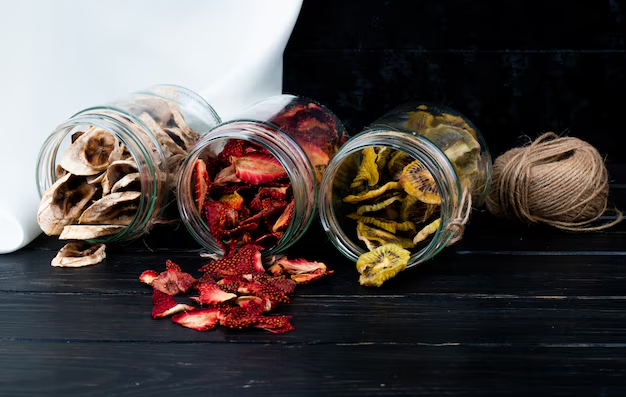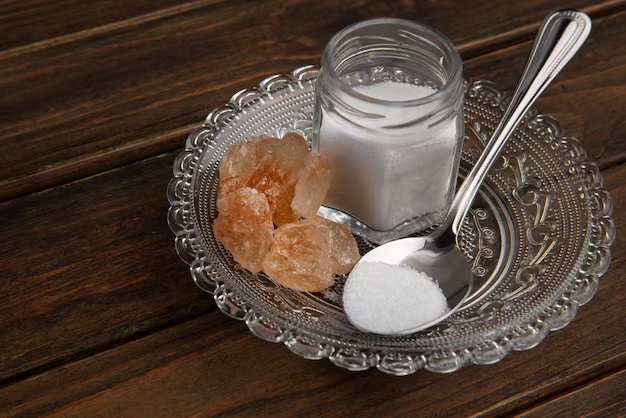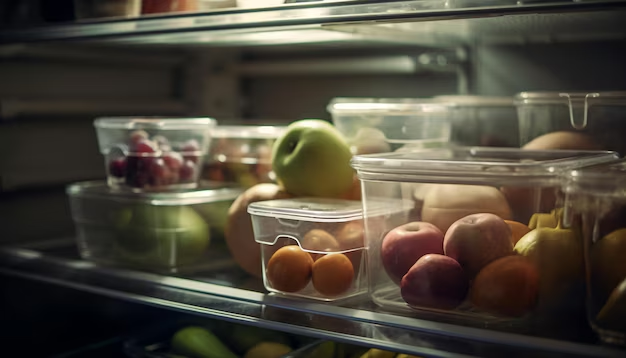What Are the Main Types of Food Preservation With Examples?
Food Preservation Methods are critical for preventing spoilage, ensuring food safety, and reducing waste. These techniques have supported human societies for centuries by keeping food edible for longer durations. In today’s world, food preservation methods play a vital role in environmental sustainability, public health, and food security across the globe.
What is Food Preservation?
Food preservation refers to the process of treating and handling food to delay spoilage and keep it safe for consumption. The main aim is to slow down or stop the growth of microorganisms, slow enzymatic activity, and prevent chemical changes that cause food to become unsafe or lose quality. These techniques can be natural or artificial and are used at both household and industrial levels.
Objectives of Food Preservation Methods
The major objectives of food preservation methods are as follows:
- Preventing or delaying the growth of spoilage-causing microorganisms.
- Maintaining the nutritional value and sensory qualities of food.
- Reducing food loss and minimizing wastage.
- Increasing the shelf life of perishable foods.
- Making seasonal and distant foods available all year round.
- Ensuring convenience and food safety for consumers.
Why Does Food Spoil?
Food spoils mainly due to four reasons—microbial contamination, insect infestation, natural enzymatic activity, and physical or chemical changes. Microorganisms such as bacteria and fungi multiply rapidly in moist, nutrient-rich foods. Insect pests can damage stored grains or fruits. Enzymes in the food continue acting after harvest, leading to over-ripening or breakdown. Physical and chemical reactions, caused by improper storage or exposure to air and light, also degrade food.
Importance of Food Preservation Methods
Implementing food preservation methods is essential for several reasons:
- Prolongs the availability and shelf life of food products.
- Limits the growth of harmful microbes, thereby preventing illnesses.
- Helps households and industries minimize food wastage and contribute to sustainability.
- Makes it possible to transport food across long distances without spoilage.
- Provides variety in diet by allowing off-season foods to be consumed year-round.
- Supports agriculture and food industries' economic growth.
Types of Food Preservation Methods with Examples
There are various food preservation methods. Each technique works well for specific food categories and has its advantages. Let’s explore the most common methods with examples.
1. Drying (Dehydration)
Drying is one of the oldest food preservation methods. It removes moisture, making it hard for bacteria and fungi to survive. Popular examples include dried fruits like raisins, apricots, and dried fish or meat (jerky). Methods range from sun-drying and air-drying to using food dehydrators.

2. Salting and Sugaring
Salting is widely used for preserving meat and fish by extracting water and inhibiting microbial action. Sugaring is effective for fruits, where sugar draws out moisture, creating jams, jellies, and candied fruits. Both methods help prolong shelf life and retain taste and texture.

3. Pickling
Pickling uses acids—usually vinegar or lemon juice—or allows food to ferment in brine. The acidic environment prevents microbial growth while adding unique flavors. Commonly pickled foods include cucumbers, lemons, onions, and mixed vegetables. Pickling is important in many global cuisines.

4. Cooling and Freezing
Refrigeration slows down enzyme activity and the growth of microbes, keeping perishable products like milk, fruits, and vegetables fresh. Freezing keeps food below 0°C, stopping microbial activity almost completely. Both techniques help preserve quality for days to months, depending on the product.

5. Canning and Bottling
Canning involves heating food in airtight containers, destroying microbes and preventing new contamination. It’s used for vegetables, fruits, beans, sauces, soups, and even meat. Properly canned food can last for months or years at room temperature.
6. Fermentation
This method relies on helpful bacteria, yeasts, or molds to convert sugars into acids or alcohol. Fermentation not only increases shelf life but also adds health benefits (like probiotics in curd or sauerkraut). Common examples: yogurt, cheese, kimchi, and idli/dosa batter. To read more about fermentation and its link with biological science, explore Biological Science on Vedantu.
7. Pasteurization
Pasteurizing food (mainly liquids) involves heating to a specific temperature for a short time. This kills harmful microorganisms but retains most nutrients and flavor. Milk and fruit juices are common examples of pasteurized products.
8. Vacuum Packing & Modified Atmosphere Packaging
Vacuum packing removes oxygen, which prevents oxidation and restricts the growth of bacteria. It’s used for cheese, cured meats, and coffee. Modified atmosphere packaging replaces air with gases like nitrogen or carbon dioxide to extend shelf life of packaged foods.
9. Food Irradiation
Irradiation exposes food to controlled ionizing radiation. It destroys pests and pathogens and extends shelf life—commonly applied to spices and some fruits. This method is useful in large-scale food distribution and improves food hygiene.
Food Preservation Methods: Table of Examples and Applications
| Method | Common Examples | Main Benefits |
|---|---|---|
| Drying | Raisins, dried fish, herbs | Lightweight, long shelf life, easy storage |
| Salting | Salted fish, pickles, cured meat | Prevents microbial growth, adds flavor |
| Sugaring | Jams, jellies, candied peel | Preserves sweetness and nutrients |
| Pickling | Sour pickles, kimchi | Acidic pH stops spoilage |
| Freezing | Peas, meat, frozen meals | Best for fresh taste and nutrition |
| Canning | Beans, canned tomatoes | Long-term, ready-to-eat |
| Fermentation | Curd, yogurt, kimchi, bread | Improves health, preserves probiotics |
| Pasteurization | Milk, juice | Safe, retains nutrients |
| Vacuum Packing | Cheese, coffee, packaged meat | Prevents contamination |
| Irradiation | Spices, dried fruits | Kills insects, microbes; keeps food safe |
This table summarizes the diversity of food preservation methods with real-world examples and their advantages. Students can observe that each method has unique relevance for different food groups and situations.
Choosing the Right Food Preservation Method
Selecting a preservation method depends on the type of food (vegetables, meat, dairy, grains), the desired duration, taste, and available resources. For example, freezing suits green peas, canning is better for tomatoes, and pickling enhances flavor in cucumbers. Considering climate and storage facilities is also vital. To further understand components of food, visit Components of Food on Vedantu.
Applications and Advantages in Real Life
Food preservation methods are essential in households, restaurants, the food industry, and for global food trade. They safeguard public health, prevent famines, and support food science and research. Their significance is highlighted in medicine (nutritional supplements), agriculture (storage of grains), and environmental conservation (reduced food waste).
Food Preservation Methods in Class 12 Biology
For Class 12 Biology, understanding the principles and science behind food preservation methods helps in multiple areas—from nutrition to microbiology. Students can use diagrams to illustrate processes like canning, fermentation, and drying. Practicing food preservation methods MCQs and reviewing the food preservation methods PPT will assist in exam preparation. For easy diagrams, refer to Important Diagrams on Vedantu.
Page Summary
Food preservation methods are vital for maintaining food quality, safety, and sustainability. By learning about their types, objectives, and real-world applications, students gain insights into their impact on health and the environment. Choosing the right method helps reduce food waste and supports sustainable development. Knowledge in this field is crucial for both academics and everyday life.


FAQs on Food Preservation Methods Explained
1. What are the main methods of food preservation?
Food preservation methods are used to extend the shelf life and safety of food by preventing spoilage and microbial growth. The main methods include:
- Drying – removes moisture, inhibits bacteria and mold.
- Canning – seals food in airtight containers after heating to kill microbes.
- Refrigeration and Freezing – slows down or halts microbial and enzymatic activity.
- Salting and Pickling – uses salt, vinegar, or brine to create inhospitable environments for microorganisms.
- Sugaring – preserves fruits by using high concentrations of sugar.
- Pasteurization – brief heating to destroy pathogens, often used for liquids.
2. Why is food preservation important?
Food preservation is important to keep food edible, safe, and nutritious for longer durations. Key benefits include:
- Prevents spoilage due to microbial activity.
- Reduces food wastage.
- Ensures food availability year-round, regardless of season.
- Improves food safety by controlling harmful bacteria.
- Maintains nutritional value when done properly.
3. What are natural methods of preserving food?
Natural food preservation methods use basic processes or ingredients without synthetic chemicals:
- Sun drying or air drying to remove moisture.
- Adding salt or sugar as preservatives.
- Fermentation using beneficial microorganisms.
- Pickling with natural acids like vinegar or lemon juice.
4. How does refrigeration help in food preservation?
Refrigeration slows the growth of bacteria and fungi by lowering the temperature of food. This process:
- Reduces the rate of spoilage and decay.
- Keeps perishable food items (like milk, fruits, vegetables) fresh for several days.
- Maintains food safety and quality for a short to medium term.
5. What is the principle behind canning food?
Canning preserves food by heating it to destroy microorganisms and then sealing it in airtight containers. The main principles are:
- Heat kills harmful bacteria, yeasts, and molds.
- Airtight sealing prevents re-entry of microbes after processing.
6. What is fermentation and how does it help in food preservation?
Fermentation is the process where beneficial microorganisms convert sugars into acids, alcohol, or gases. This helps preserve food by:
- Lowering the pH, making it difficult for spoilage-causing organisms to survive.
- Enhancing flavor, texture, and nutrition (as in yogurt, pickles, kimchi).
- Offering a natural method suitable for many foods.
7. What are chemical methods of food preservation?
Chemical preservation involves adding substances that inhibit spoilage by microbes or oxidation. Common chemical preservatives include:
- Sodium benzoate and potassium metabisulphite for juices and jams.
- Salt and sugar for pickles and jams.
- Acids like vinegar or citric acid.
8. Name some examples of foods that can be preserved by dehydration.
Dehydration preserves food by removing moisture, inhibiting microbial growth. Examples include:
- Fruits – such as apricots, raisins, and apples.
- Vegetables – like peas, carrots, and mushrooms.
- Meat and fish – such as dried fish and jerky.
9. What is the difference between pasteurization and sterilization?
Pasteurization and sterilization are thermal processes for food preservation, but they differ as follows:
- Pasteurization – involves heating food (usually liquids) to a temperature below boiling for a short time to kill pathogens without affecting taste or nutrition much (e.g., milk).
- Sterilization – uses higher temperatures to destroy all forms of microbial life, leading to longer shelf life and is used in canning.
10. What precautions should be taken while preserving food at home?
Safe food preservation at home requires careful hygiene and following proper methods. Key precautions include:
- Use clean utensils and storage containers.
- Follow recommended recipes and times for canning, pickling, or fermenting.
- Store preserved foods in cool, dry places.
- Check and discard foods with signs of spoilage (mold, off-smell, gas formation).
- Label containers with date and type of food preserved.










